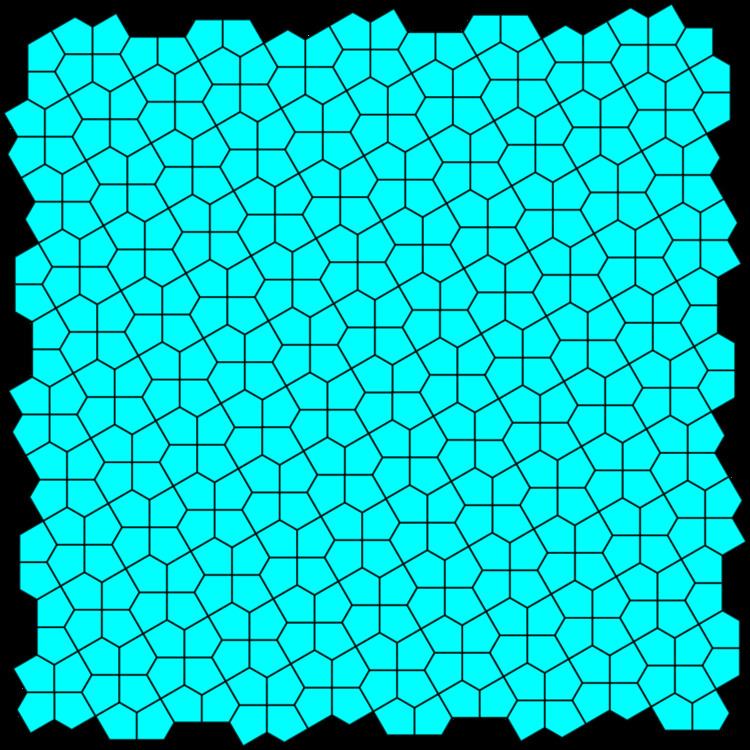Faces irregular pentagons Dual polyhedron Snub square tiling | Rotation group p4, [4,4], (442) Face configuration V3.3.4.3.4 | |
 | ||
Type Dual semiregular tiling Symmetry group p4g, [4,4], (4*2)
p4, [4,4], (442) | ||
In geometry, the Cairo pentagonal tiling is a dual semiregular tiling of the Euclidean plane. It is given its name because several streets in Cairo are paved in this design. It is one of 15 known monohedral pentagon tilings.
Contents
- Geometry
- Variations
- Dual tiling
- Relation to hexagonal tilings
- Topologically equivalent tilings
- Truncated cairo pentagonal tiling
- Related polyhedra and tilings
- Additional reading
- References
It is also called MacMahon's net after Percy Alexander MacMahon and his 1921 publication New Mathematical Pastimes.
Conway calls it a 4-fold pentille.
As a 2-dimensional crystal net, it shares a special feature with the honeycomb net. Both nets are examples of standard realization, the notion introduced by M. Kotani and T. Sunada for general crystal nets.
Geometry
These are not regular pentagons: their sides are not equal (they have four long ones and one short one in the ratio 1:sqrt(3)-1), and their angles in sequence are 120°, 120°, 90°, 120°, 90°. It is represented by with face configuration V3.3.4.3.4.
It is similar to the prismatic pentagonal tiling with face configuration V3.3.3.4.4, which has its right angles adjacent to each other.
Variations
The Cairo pentagonal tiling has two lower symmetry forms given as monohedral pentagonal tilings types 4 and 8:
Dual tiling
It is the dual of the snub square tiling, made of two squares and three equilateral triangles around each vertex.
Relation to hexagonal tilings
This tiling can be seen as the union of two perpendicular hexagonal tilings, flattened by a ratio of
Topologically equivalent tilings
As a dual to the snub square tiling the geometric proportions are fixed for this tiling. However it can be adjusted to other geometric forms with the same topological connectivity and different symmetry. For example, this rectangular tiling is topologically identical.
Truncated cairo pentagonal tiling
Truncating the 4-valence nodes creates a form related to the Goldberg polyhedra, and can be given the symbol {4+,4}2,1. The pentagons are truncated into heptagons. The dual {4,4+}2,1 has all triangle faces, related to the geodesic polyhedra. It can be seen as a snub square tiling with its squares replaced by 4 triangles.
Related polyhedra and tilings
The Cairo pentagonal tiling is similar to the prismatic pentagonal tiling with face configuration V3.3.3.4.4, and two 2-uniform dual tilings and 2 3-uniform duals which mix the two types of pentagons. They are drawn here with colored edges, or k-isohedral pentagons.
The Cairo pentagonal tiling is in a sequence of dual snub polyhedra and tilings with face configuration V3.3.4.3.n.
It is in a sequence of dual snub polyhedra and tilings with face configuration V3.3.n.3.n.
